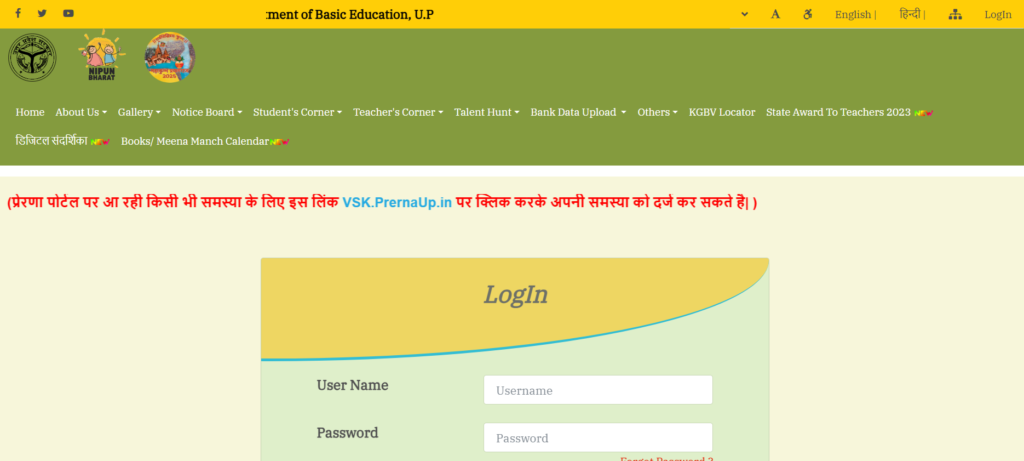
The agriculture-based economy of India is supported by its diversity in the livestock industry, as it influences rural employment, income and livelihood. However, farmers frequently suffer financial losses as a result of premature death of their animals from diseases, road accidents or natural calamities. In an attempt to give some kind of secure compliance to the Livestock Owners, the government launched the Mangla Pashu Bima Yojana- a scheme aimed at covering any loss of livestock faced by farmers.
This blog post is meant to offer you a complete insight into Mangla Pashu Bima Yojana, its aims, beneficiary list & eligibility, registration details and how it is weaving magic for rural India.
What is Mangla Pashu Bima Yojana?
Mangla Pashu Bima Yojana is a livestock insurance scheme of the government that will protect farmers from losses in case their cattle die or suffer any damage. This scheme ensures animals, including cows, buffaloes, goats, sheep and camels by the government; if a farmer faces any loss due to unpredictable conditions, he is provided compensation.
Primary objective: The main aim of Mangla Pashu Bima Yojana is to protect’ the livelihood of livestock owners and ensure sustainable animal husbandry in rural areas.” By providing low-cost insurance policies, it reduces the financial liability of the small and marginal farmers who heavily rely on their animals for income and draft power.
Mangla Pashu Bima Yojana Overview Table
| Particulars | Details |
| Scheme Name | Mangla Pashu Bima Yojana |
| Launched By | Government of India (State/Animal Husbandry Department) |
| Objective | To provide financial protection to farmers against the loss of livestock due to death, disease, or accidents |
| Beneficiaries | Farmers, livestock owners, and dairy entrepreneurs |
| Animals Covered | Cows, buffaloes, goats, sheep, camels, and other livestock |
| Type of Benefit | Insurance coverage and compensation for animal loss |
| Premium Amount | Minimal premium (subsidized by the government) |
| Government Subsidy | 75%–80% subsidy on premium for small and marginal farmers |
| Compensation Amount | Based on the market value of the insured animal at the time of death |
| Eligibility Criteria | Farmers or livestock owners with healthy, certified animals |
| Required Documents | Aadhar card, animal ownership proof, animal photo, veterinary health certificate, bank details |
| Application Mode | Offline (veterinary offices) and online (state portals, where available) |
| Identification Process | Each insured animal is tagged with a unique identification number |
| Policy Duration | Generally 1 year (renewable annually) |
| Claim Process | Inform authorities within 24 hours → Veterinary verification → Submit documents → Compensation credited to bank account |
| Implementing Agency | Department of Animal Husbandry and Dairying in collaboration with insurance companies |
| Key Benefits | Financial security, rural empowerment, risk mitigation, promotion of animal husbandry |
| Target Group | Small and marginal farmers, women in rural areas, and BPL families |
| Major Goal | To strengthen the rural economy and ensure a sustainable livelihood for farmers |
Objectives of The Mangla Pashu Bima Yojana
- Farmers’ Livelihood Protection: Compensation for loss of livestock will be paid to lessen the economic burden on rural families in the event of the death of their animals.
- Promotion of Animal Husbandry: To encourage livestock rearing as an alternative income resource for marginal farmers.
- Risk reduction: Reducing the impact of unpredictable losses to livestock through accidental deaths or diseases.
- Community Empowerment: To empower women, rural entrepreneurs involved in the dairy, poultry and cattle farming.
- Elite Performance: To contribute to the economic development of the rural sector through the financial well-being of animal rearers.
Features of Mangla Pashu Bima Yojana
There are several attractive aspects of the scheme that make it friendly and pro-farmers. And these are the most important features:
- Low Premiums: The insurance premiums for farmers are very low and subsidies are provided by the government to all of them.
- Coverage of Different Animals: The coverage is for indigenous cows and those inseparable from calves.Coverage for Other Livestock: Besides cows, cattle insurance policy covers buffaloes, goats, sheep and combines these animals that are possessed by rural households.
- Comprehensive Remuneration: The farmer gets the market value of the insured animal on its death.
- Simple registration: Registration can be easily done through local veterinary officers or online.
- Animal Identity: Every insured animal is ear-tagged with a unique identification number to avoid fraud and establish transparency.
- Policy duration: Insurance is usually enabled for a 1-year term and can be renewed annually.
Eligibility Criteria to apply for Mangla Pashu Bima Yojana
- The candidate should be an Indian farmer or livestock raiser.
- The farmer has to have the agreed documents showing ownership of the animal.
- The animal to be covered must be healthy and examined by a veterinary surgeon.
- Preference is given to small and marginalized farmers, especially women, and those below the poverty line (BPL).
- The animal to be named and tagged before the issuance of an insurance policy.
Documents Required for Registration
Farmers must provide the following documents for the Mangla Pashu Bima Yojana Registration:
- Aadhar card or any to the recognition of having been issued by the government.
- Proof of residential address (ration card, voter ID, etc.)
- Proof of animal ownership or purchase statement
- A new photo of the creature
- Sanitary certificate issued by a veterinary doctor
- Bank Account Number for claim payments
How to apply for Mangla Pashu Bima Yojana
It is to provide for an easy registration process and it should be farmer-friendly. Here’s a step-by-step guide:
- Contact Nearest Veterinary Office: Farmers can visit the veterinary or animal husbandry office near their location for registration in the scheme.
- References: Submit Your documentsYour must submit your identification and animal health documents.
- Animal Health Check: A vet officer scans the animal and gives a health certificate.
- Tagging: Tying a special identification tag on the insured animal and entering it in recorded files.
- Premium Cost: The farmer pays a lower premium amount, while the policy is activated upon acceptance.
- Get Policy Certificate: Upon successful enrollment, the farmer gets an insurance policy certificate as proof of coverage.
Claim Process under Mangla Pashu Bima Yojana
So, what sho+uld the farmer do if his insured animal dies?
- Prompt Notice: Notice to the insurance company or its office within 24 hours of death.
- Verification: The veterinary officer will visit the spot, verify and prepare a postmortem report.
- Document Submission: The farmer sends back all necessary documents such as the postmortem report, ID proof and policy certificate.
- Claim Disbursal: Once the verification procedure is over, the compensation is disbursed directly to the farmer’s bank account.
This mechanism guarantees transparency and fast financial help for the harmed farmer.
Premium and Subsidy Details
The most appealing feature of the Mangla Pakshu Bima Yojana is its low premium. The insurance premium is heavily subsidised by the government, particularly for small and marginal farmers.
Generally, the farmer pays between 20 to 25 per cent of the total premium and the rest is paid by the government. This means that even poor farmers are able to provide affordable insurance for their livestock.
“Yes, the actual premium can be varied upon type of animal, age, and market value, but on average, it will not make a great difference in final cost – still farmer-friendly and affordable for them.
Advantages of Mangla Pashu Bima Yojana
The Mangla Pashu Bima Yojana offers various advantages for farmers and the agricultural sector as a whole:
- Financial Relief: Provides timely financial assistance to farmers when animals are lost.
- Encouragement of Dairy Development: Increases dairy farmer confidence and the likelihood of herd expansion.
- Women’s Empowerment: Many rural women engaged in animal husbandry will become financially secure because of this offering.
- Poverty Reduction: Provides protection against the risk of farmers taking on debt when animals die.
- Social Security: Creates a safety net for rural communities that rely on animal-farming industries.
Not only does this initiative provide a financial safety net, but it also creates incentives for rural farmers to implement better animal husbandry practices which improve animal health and productivity.
Impact on Rural Economy
The Mangla Pashu Bima Yojana has significantly benefited the rural economy. For many small farmers, livestock is typically the greatest asset and a source of income when times are tough. Livestock insurance increases rural resilience and economic stability.
Additionally, with guaranteed compensation, farmers are more likely to invest in better genetic animals, veterinary services, and improved feed quality. This benefits productivity and incomes for rural farmers.
Also Read: Manav Garima Yojana | SBI Annuity Deposit Scheme | Bihar Student Credit Card Scheme
Challenges in Implementation
While the Mangla Pashu Bima Yojana has been successful in reaching thousands of farmers, some challenges exist:
- Unawareness: There is a lack of knowledge among many farmers in rural locations about the scheme.
- Document Processing Delays: Struggle to receive the documentation necessary ejaculates registration and claim generation.
- Inadequate veterinary manpower: There are few veterinarians in the rural villages to scientifically verify as follows.
- Delays in Claims: Sometimes, compensation gets delayed because of the red tape.
To address these issues, awareness programmes, registration digitalization and development of veterinary infrastructure is being carried out by the government and local bodies.
Prospects of Mangla Pashu Bima Yojana in the future
The Mangla Pashu Bima Yojana has tremendous scope for expansion in the future. The scheme can be more efficient with larger digital acceptance as online registration and claim process. Moreover, if animal tracking, biometric identification and e-governance are added to this, transparency and fraud will come down.
As farmers become aware, more will join – and coverage of the new program will increase while rural prosperity grows. The ultimate objective is to make livestock insurance widespread across millions of farming families in India.
Conclusion
Given its low premiums, minimalist procedures, and straightforward benefits, the Mangla Pashu Bima Yojana will revamp the village and agricultural economy of a sensitive rural India.
FAQs about Mangla Pashu Bima Yojana
Q-1) What is Mangla Pashu Bima Yojana?
A- It is a livestock insurance policy under which the farmers are indemnified in case of the death of their livestock.
Q-2) What animals are included in the scheme?
A- Cows, buffaloes, goats, sheep and camels are under the scheme.
Q-3) How to sign up for the scheme?
A- Farmers sign up at their closest veterinary office or certified insurance point.
Q-4) What documents are needed as proof for making a claim?
A- Documents like animal ID, post mortem report, policy certificate and bank details will be needed.
Read Also: Pradhan Mantri Mudra Yojana | Mukhyamantri Rajshree Yojana | Bihar Laghu Udyami Yojana

